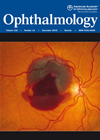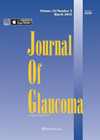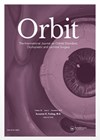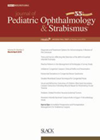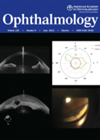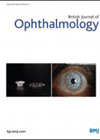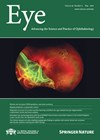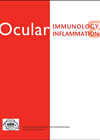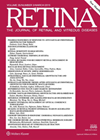You searched for "OCT "
Anterior segment OCT predicts gonioscopic angle closure
1 February 2016
| Brian Ang
|
EYE - Glaucoma
This is a prospective observational study of 342 subjects over four years. Sixty-five were controls who had open angles both on gonioscopy and AS-OCT, while 277 had open angles only on gonioscopy but iridotrabecular contact (ITC) on AS-OCT (one to...
Handbook of Pediatric Retinal OCT and the Eye-Brain Connection
7 December 2020
| Sofia Rokerya
|
EYE - Imaging, EYE - Vitreo-Retinal, EYE - Strabismus, EYE - Paediatrics
Paediatric optical coherence tomography (OCT) imaging of the eye remains an evolving technology to date. This handbook delves into this challenging area successfully and gives a comprehensive and detailed input into paediatric OCT pertaining to the retina and the optic...
Reproducible OCT RNFL map in unilateral glaucoma
1 April 2015
| Lorraine North
|
EYE - Glaucoma
The aim of the study was to compare the reproducibility of the optical coherence tomography retinal nerve fibre layer (OCT RNFL) thickness map between glaucomatous and fellow normal eyes of unilateral glaucoma patients. The authors carried out a prospective case...
OCT-A imaging in Grave’s orbitopathy and orbital decompression
In this case series of 12 patients and 24 orbits, the authors describe the changes in the optic nerve and peripapillary blood vessel density in patients with moderate to severe Grave’s Orbitopathy (GO) undergoing orbital decompression. The patients undergoing orbital...OCT measurements of eye muscles for Grave’s disease
The purpose of this study was to use optical coherence tomography (OCT) to assess horizontal rectus muscle thickening in patients with active and inactive Grave’s ophthalmopathy (GO) compared to healthy controls. This was a cross section observation study of rights...Practical Handbook of OCT (Retina, Choroid, Glaucoma)
1 October 2014
| Shirley Hancock
|
EYE - Glaucoma, EYE - Vitreo-Retinal, EYE - Imaging, EYE - General
With the rapid development and expansion in the usage of optical coherence tomography (OCT) technology there is always demand for a new OCT publication on the bookshelves. The operation and acquisition skills required are more easily acquired than for the...
Swept-source OCT for measuring peripheral anterior synechiae
1 December 2013
| Brian Ang
|
EYE - Glaucoma
The authors report on a cross-sectional study looking at swept-source optical coherence tomography (SS-OCT) for measuring the area and degree of peripheral anterior synechiae (PAS) in patients with angle closure glaucoma. The SS-OCT is commercially available, has a laser wavelength...
SS-OCT assessment of ITC after phacoemulsification
This is a multicentre randomised controlled trial of 22 patients with primary angle closure glaucoma with peripheral anterior synechia and peripheral primary angle closure glaucoma (PACG) with peripheral anterior synechia (PAS) detected by indentation gonioscopy was randomised into two groups....Handheld OCT in children with Down’s syndrome
This article investigated the use of handheld optical coherence tomography (OCT) in children with Down’s syndrome. Fourteen children were recruited to the study with a mean age of 6 years and 10 months with 57% male. All patients were dilated....Using OCT to screen and monitor Alzheimer’s disease
1 June 2016
| Claire Howard
|
EYE - Neuro-ophthalmology
|
Macular thickness, mild cognitive impairment, optical coherence tomography, subjective memory complaints
Alzheimer’s disease (AD) is a neurodegenerative illness characterised by progressive decline in cognitive function. AD is the main cause of dementia worldwide. Over recent years researchers have strived to find biomarkers to diagnose AD, particularly in the early stages of...
Choroidal thickness in ocular sarcoidosis by OCT measurement
1 December 2014
| Nikolaos D Georgakarakos
|
EYE - Vitreo-Retinal
This is the first study to evaluate the choroidal thickness in patients with ocular sarcoidosis during the quiescent phase using enhanced depth imaging optical coherence tomography (EDI-OCT) and comparing with normal subjects. Ocular sarcoidosis may affect the choroidal circulation (occlusive...
Hyper reflective foci (HRF) on OCT in diabetic retinopathy
1 April 2015
| Saruban Pasu
|
EYE - Vitreo-Retinal
This study investigated the presence of hyper reflective foci (HRF) in asymptomatic patients affected by type 1 or type 2 diabetes, separately, without clinically significant diabetic macular oedema and visual impairment. In total 71 eyes with non-proliferative diabetic retinopathy were...

